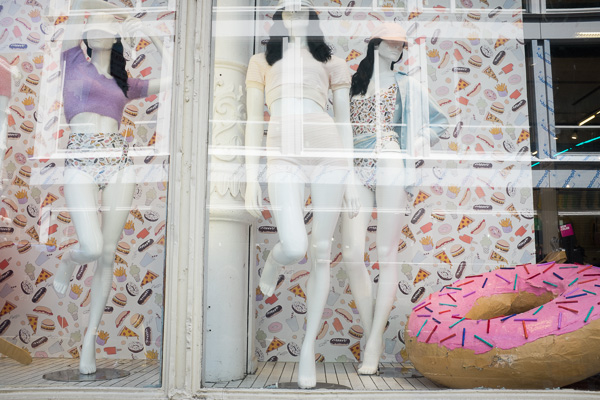
Donut, American Apparel, NYC. Yes, someone thought this was a good idea.
While it takes time to master the technical skills needed to excel at street photography, I think the most difficult aspect of the genre is trying to figure out what you are trying to capture. I get this question a lot, "What should I be looking for?"
This is why street photography is a genre where experience is second to none. You can get comfortable capturing strangers candidly, you can learn to technically capture your images perfectly, but finding your voice is something that takes years of experience, exploring, and organizing of your images.
Ultimately, I can't answer this question as it's up to you to figure out what to capture, however I can give some tips and ideas to help figure it out.
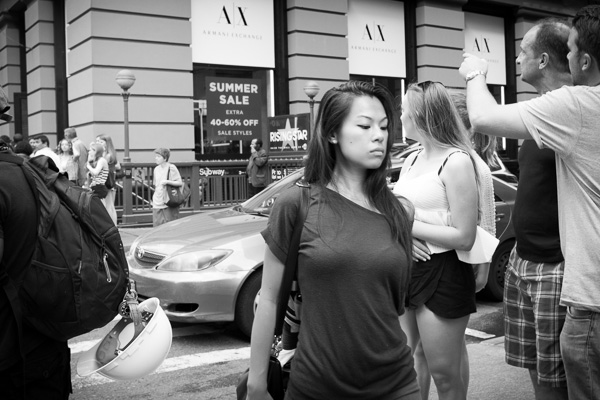
A Powerful Expression, SoHo, NYC.
1. Photograph constantly in areas that you frequent and know well.
Practice street photography in areas that you know well. If you know an area well then you will be able to describe it well in your photographs. You will already know how it ticks, the weird nooks and crannies, and the type of people that live nearby. Use photography as a way to explore your area and to portray it to others.
Ultimately as you get better, you will be able to photograph in areas that you don't know well as you explore them. This is important. However, it takes a very skilled photographer to be able to be transported into a place that they don't know well, survey the place, and be able to take poignant images. More often than not the images will feel touristy to an insider that lives in the area.
The best place to to develop your photographic voice is near home.
2. Think about the types of images that you relate to.
Which of the images that you have captured relates the most to you? Your photography will end up becoming a representation of you and how you think, so think about yourself and your ideas as you photograph. Try to photograph what you are thinking as you are out there.
This takes time to develop. You can't just walk outside and do this. Over years of photographing you will begin to notice yourself in your images and then you will become more aware of moments that convey who you are.
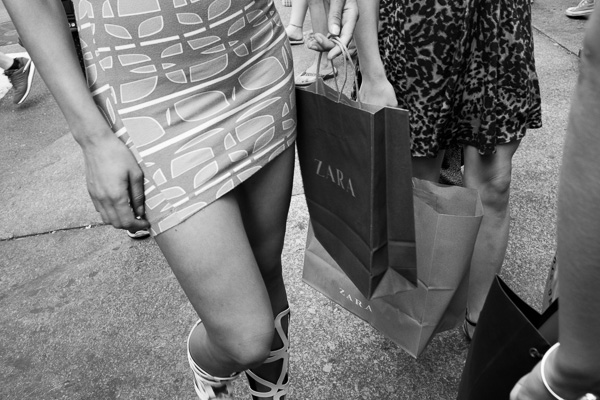
SoHo, NYC. A tight crop, but one with interest, gesture, and many elements and textures.
3. Look for constants in your work and group images based on ideas and themes.
Editing and reviewing your images is one of the best ways to improve your photography. This is where you get to asses how you've improved and to really slow down and think about what you are trying to say. It will give you new ideas for what to capture and for what to look out for.
On a similar note, review the images of other photographers to help figure out what images you relate to. There is no better way to inspire your work than to find imagery from others that inspires you.
4. Tell stories over multiple images.
One of the ultimate points in street photography is creating a body of work that is consistent, whether or not the images were taken in the same area or of the same content. The images play off each other to tell a story.
You can think of these ideas ahead of time, but I think it's better to go out and photograph consistently for a long stretch of time, then spend time reviewing and editing your work, while keeping your mind open to what the images tell you. You can let the images guide you to an idea.
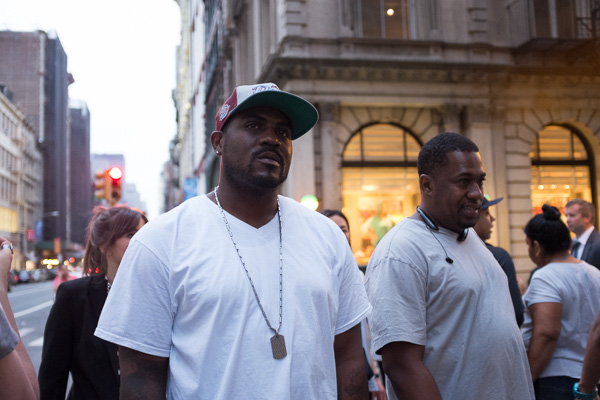
SoHo, NYC. This shot is about the expression in the subject's eyes.
5. Focus on expressions and ideas more than just interesting people walking down the streets.
One thing I hate, but do frequently as all street photographers do, is to capture images of people walking down the street where nothing is happening. These are impossible not to take since street photography is often instinctive, and you have to take a lot of images where nothing happens to get those few that are really special. My archive is littered with bad images where I saw a sliver of potential but nothing happened.
Something needs to happen in the photograph. There needs to be an idea, an emotion, or an expression.
I tend to look in people's eyes before anything else. The eyes are the key to showing emotion and if you can capture a poignant expression in the eyes, then your photo will be significantly better. Notice a subject's eyes first and wait for them to give a look, not necessarily at you although that can work, but at something. You want to see a thought going through their head.
6. Think about what will change and how people will see your photographs in 20 years.
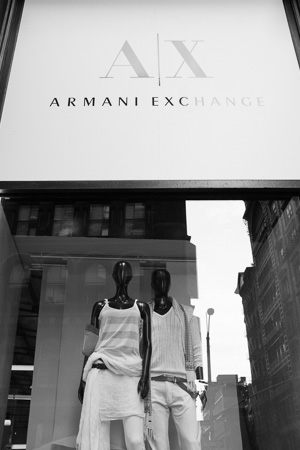
SoHo, NYC. One day this window display will look extremely dated.
When you look at photographs of the past, what interests you? I'm assuming for many of you the photographs you prefer are ones of people, fashions, or shop windows and not necessarily of architecture or landscapes.
Images of the past show us what life was like and make us think about our own lives in that way. However, those scenes probably looked fairly standard to the photographers when they were first captured.
Just as a photograph of a Gap store window might seem like the most boring thing in the world to you now, it could easily be one of the most fascinating images in 20 years when everything has changed. Think about how many people have a photograph of a Gap window. Everyone has a photograph of the Chrysler Building, but photographs of everyday life are much rarer.
7. Think and react.
Street photography is both about thinking and instinctive reacting. Unfortunately, those two ideas are at odds with each other. Do your thinking while you are editing and reviewing your work. Think about things when you are walking around, but ultimately when a moment unfolds, turn your brain off and react.
Do you have any other tips you'd add to this list? How do you approach street photography?
The post 7 Tips for Doing More Meaningful Street Photography by James Maher appeared first on Digital Photography School.
No comments:
Post a Comment